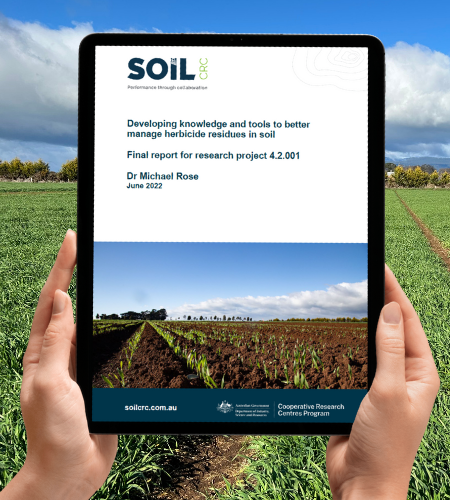Summary
Herbicides are widely used in Australian agricultural systems for weed control. Some herbicides can persist in soil long enough to carry over from one cropping season to the next, which can pose a risk of injuring the following crop. There are currently few resources (i.e. information, tools, services) available to farmers to help determine if herbicide residues are causing yield losses.
In this project we aimed to develop new knowledge and tools for managing herbicide residues, including: i) defining herbicide concentration in soils that cause damage to crops (i.e. ‘toxicity thresholds’); ii) developing new methods to diagnose herbicide injury in crops; iii) assessing rapid methods to determine herbicide sorption in soil, which regulates herbicide fate and bioavailability; iv) predicting herbicide persistence in soil over time; and v) determining whether herbicide residue mixtures are influencing crop performance.
The researchers generated 80 new herbicide toxicity thresholds; derived new pedotransfer functions to predict sorption of three priority herbicides in soil; created and validated a new model to predict herbicide persistence in soil; and conducted over 30 field surveys and designed experiments to measure the fate and effects of herbicide residues in soil.
The information was translated to farmers, agronomists, and researchers through annual field days at three different experimental sites, and over 10 conference presentations, research booklets, and journal articles. Feedback from growers and agronomists suggests that information generated in this project would help build confidence in decision making to avoid herbicide residue damage, by better diagnosing when, where, and how herbicides are persisting in soil and causing crop damage.
More research and translation is now required to validate findings from this project under a wider range of conditions and establish a testing service for herbicide residues in soil and plant samples.

